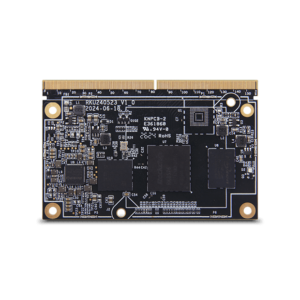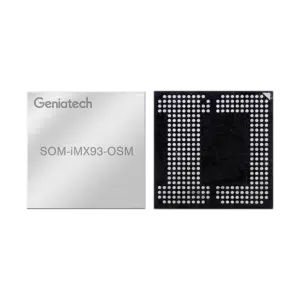System on Module vs. Traditional Development: Which Is Right for You?
System on Module vs. Traditional Development: Which Is Right for You?
Blog Article
The quick progress of technology has driven substantial improvements in embedded methods, certainly one of that will be the system on a module Working as a bridge between custom electronics and off-the-shelf modules, the SoM is redefining how designers method stuck process design. This website features the essential understanding of a System on Component and its growing purposes in several industries.

What's a System on Element (SoM)?
A Process on Component (SoM) is just a lightweight, ready-to-use board that combines all of the key the different parts of something about the same module. This on average contains the processor, memory, power management models, and sometimes extra peripherals like Wi-Fi or Ethernet. Unlike a conventional single-board computer, an SoM does not include ties and screen locations pre-installed, meaning it should be coupled with a provider panel to form a whole system.
Built to streamline development workflows, the modular nature of an SoM enables developers to skip the elaborate means of developing and assembling each individual portion from scratch. By adopting an SoM, organizations may focus more on the application-specific features of the products.
Advantages of Using Program on Element
The integration of a complete system on one element gifts many benefits. First, it significantly reduces enough time necessary for product development. Pre-tested modules ensure stability, saving weeks of benefit design teams.
Also, the scalability of an SoM allows companies to modify efficiency degrees based on challenge requirements. As an example, a low-cost alternative can simply scale into a high-end solution by changing the model in the module while keeping the service panel design. This process reduces engineering risks while selling long-term cost-efficiency.
Last but not least, the consistency of an off-the-shelf element assures large compatibility with current methods and frameworks, making it ideal for both little startups and big enterprises striving to hit the industry quickly.
Critical Applications of SoM in Stuck Methods
The utilization of System on Adventures spans several high-demand industries including however not restricted to medical units, automation, and client electronics.
Medical Devices
Accuracy and consistency are paramount in healthcare. System on Adventures with secure control functions are embedded in watches, imaging products, and lightweight diagnostic tools.
Industrial Automation
Robust and energy-efficient, an SoM is crucial for professional get a handle on techniques and autonomous robotics. Their scalable architecture supports high-speed information processing and IoT connectivity.
IoT Products

Customer products like clever thermostats, wearable units, and even house personnel include an ultra-compact System on Module for easy performance.
The System on Module continues to gain traction due to its decreased difficulty and versatility, cementing it self as a future-proof solution in the stuck systems sphere. Industry leaders are actually leveraging these modules, and their range is expected to expand even further as technology evolves.
Report this page